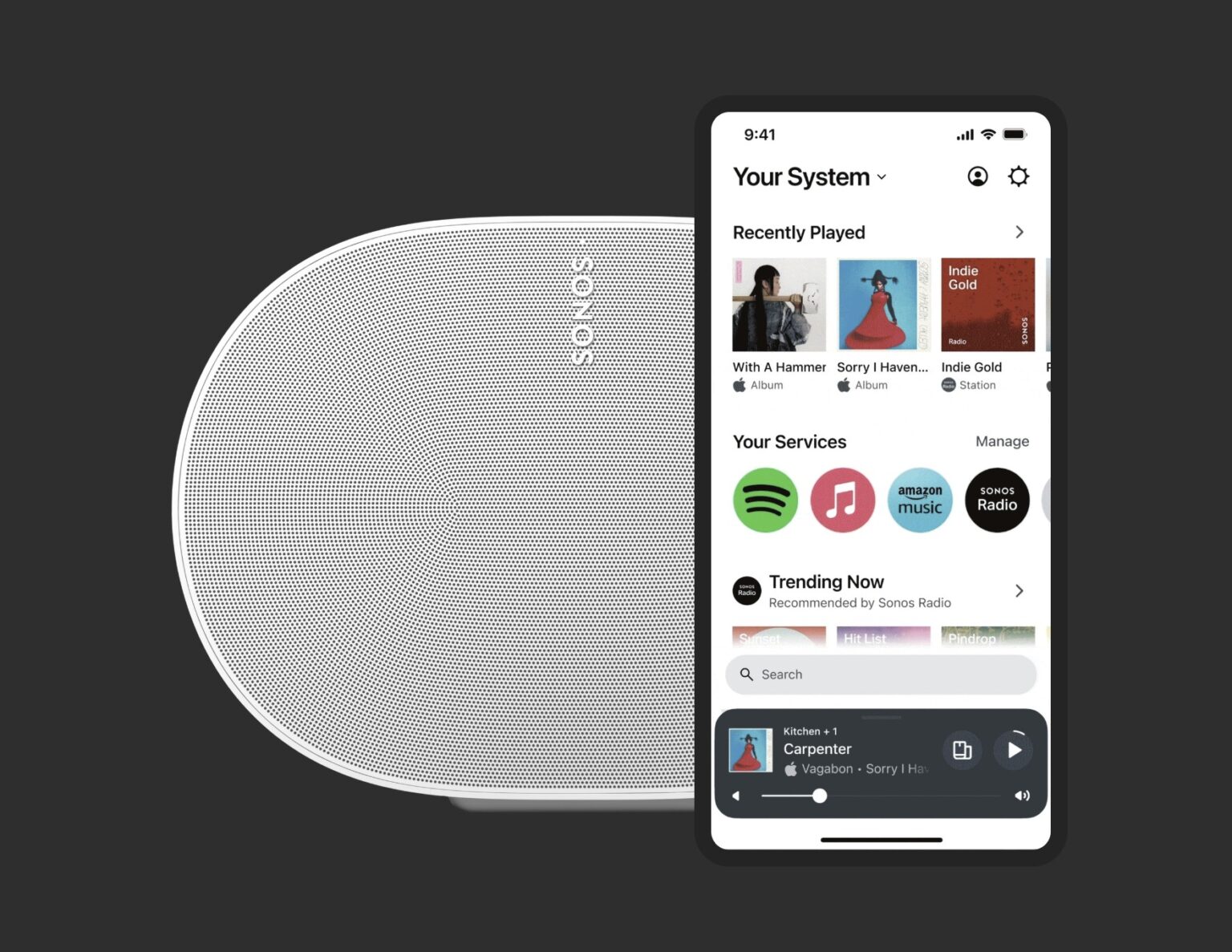In a big shake-up at smart speaker maker Sonos — whose high-end audio products are popular with Apple users — CEO Patrick Spence resigned effective immediately and a board member will step in as interim CEO, the company said Monday. Spence’s departure comes after a turbulent 2024 that saw the company struggle with a controversial app redesign, disappointing product launches and declining customer satisfaction.
Sonos CEO steps down after disastrous app redesign
So Spence resigned both as CEO and as a member of the company’s board, and board member Tom Conrad became interim CEO while Sonos searches for a new one, the company said Monday. And as reports in The Verge and elsewhere outline, the trouble for Sonos began in spring 2024 when it released a completely overhauled but highly problematic app. It quickly became the center of widespread customer criticism.
For Apple users familiar with the typically smooth integration between Sonos and iOS devices, the new app represented a big step backward, with missing features and performance issues that affected basic functionalities. Users reported problems ranging from speakers disappearing from the app to morning alarms failing to activate—issues that would be particularly concerning for Apple users accustomed to reliable HomeKit integration.
Reports suggested Sonos rushed the app to coincide with the release of the company’s first headphone product, the well-reviewed Sonos Ace. However, the strategy backfired as the the app controversy overshadowed the headphones’ launch, leading to disappointing sales figures. For Apple users who might have been considering the Ace as an alternative to AirPods Max, the timing couldn’t have been worse.
New leadership and recovery efforts
Conrad, a board member since 2017, stepped in as interim CEO as of Monday while the company searches for a permanent replacement. Conrad’s background includes significant experience in the tech industry, including a decade as CTO at music streamer Pandora and time as vice president of product at Snapchat. He also worked on Apple’s Finder software during the 1990s, giving him valuable insight into the Apple ecosystem that many Sonos users rely on.
In a candid letter to employees, Conrad acknowledged the company’s missteps: “This year we’ve let far too many people down. Getting some important things right (Arc Ultra and Ace are remarkable products!) is just not enough when our customers’ alarms don’t go off, their kids can’t hear their playlist during breakfast, their surrounds don’t fire, or they can’t pause the music in time to answer the buzzing doorbell.”
Ongoing app improvements and other bright spots

Photo: Sonos
Despite the leadership change, Sonos has confirmed it will not revert to the old app version. Instead, the company continues to release updates addressing bugs and restoring missing features. The company’s spokesperson emphasized that while the new app has improved significantly since its launch, they acknowledge there’s still work to be done to regain customer trust.
For Apple users invested in the Sonos ecosystem, there may be hope on the horizon. The company’s product pipeline remains active, with rumors suggesting a streaming video player in development. This could potentially offer interesting integration possibilities with Apple TV+ and other Apple services.
The one bright spot in Sonos’s 2024 lineup was the Arc Ultra soundbar, which received positive reviews despite the company’s other challenges. This suggests that while Sonos struggled with software execution, their hardware expertise remains strong—a crucial factor for Apple users who prioritize both design and performance in their home audio solutions.
Rebuilding trust with customers
Spence, who joined Sonos in 2012 and led the company through several successful hardware launches, will assume an advisory role with Sonos until June 30. His departure package includes a monthly salary of $7,500 for “strategic advisory services” and a final severance of $1,875,000.
The challenge for Conrad and whoever becomes the permanent CEO: Rebuilding trust with Sonos’s core user base, including the significant portion who rely on Apple devices. They must bolster the company’s traditional strength in delivering seamless integration with iOS devices and Apple Music to regain its position as a premium audio brand.


